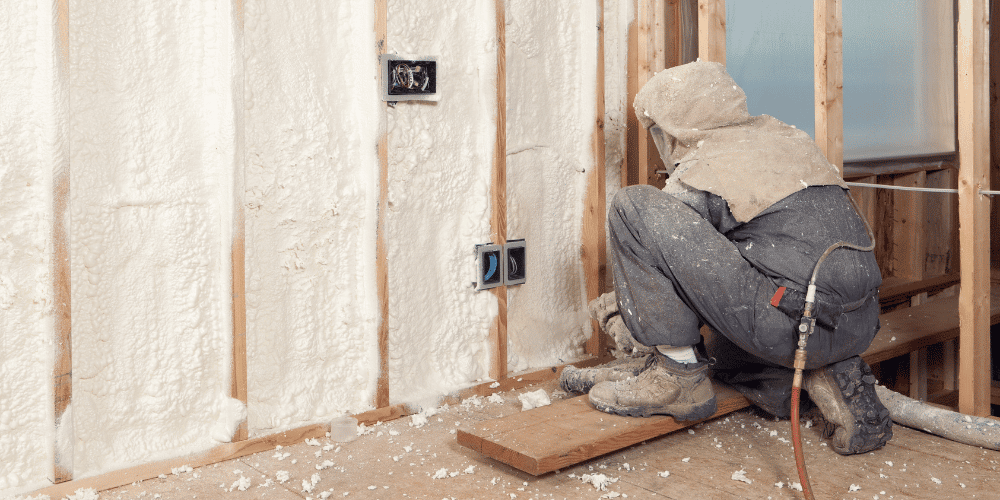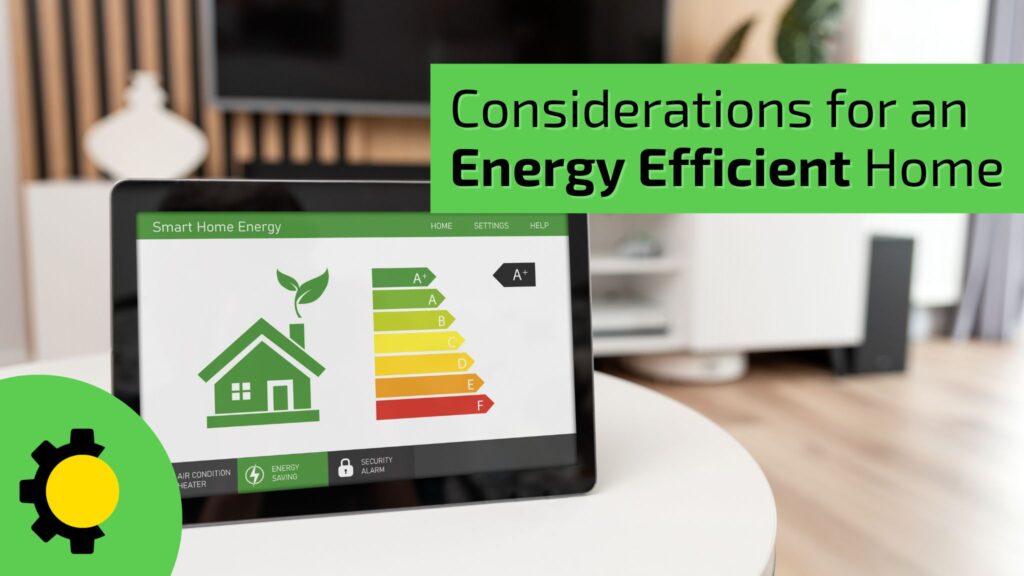When planning to build a new home, it’s a smart move to prioritize energy efficiency right from the start. Doing so not only helps to reduce your future energy consumption but can also lead to significant cost savings over time. The initial planning phase is ideal for deciding how energy-efficient you want your home to be, allowing you to make informed choices that align with both your environmental and financial goals.
Insulation and air sealing play a crucial role in minimizing energy loss, which we’ll explore in greater detail shortly. Let’s now dive into the key aspects of designing an energy-efficient home.
Key Considerations for an Energy-Efficient Home
According to the U.S. Department of Energy, the most effective approach to maximizing energy efficiency in a home is through a “whole-house” strategy. This involves evaluating all elements of the house that impact energy consumption, from structural design to the materials used.
A whole-house approach goes beyond just selecting energy-efficient appliances and considers the broader context, such as your home’s climate zone and specific environmental conditions at the building site. Collaborating closely with contractors and other building professionals on these aspects will help you make well-rounded decisions. Here are some of the primary areas the DOE suggests focusing on:
- Energy Star-Rated Appliances and Electronics: These appliances meet strict efficiency guidelines and can significantly reduce energy usage in the home.
- Insulation and Air Sealing: Proper insulation, especially with products like foam, is key to preventing air leaks and maintaining a consistent indoor temperature, which reduces heating and cooling needs.
- Lighting and Natural Daylighting: Utilizing energy-efficient lighting, like LED bulbs, and incorporating natural daylighting where possible can cut down on electricity usage.
- Heating and Cooling Systems: Efficient heating during the winter and cooling in the summer are essential. This can be achieved by choosing the right HVAC systems and ensuring they are appropriately sized for the home.
- Water Heating: Selecting an energy-efficient water heater can have a significant impact on overall energy use. Tankless water heaters or solar water heaters are two good options to consider.
- Windows, Doors, and Skylights: These elements play a role in heat gain and loss. Energy-efficient windows and doors help to insulate your home and keep temperatures stable, reducing the demand on your heating and cooling systems.

Measuring Your Home’s Energy Efficiency
To get a comprehensive understanding of your home’s energy efficiency and identify potential areas for improvement, the Department of Energy’s Better Buildings division offers a Home Energy Score. This score evaluates your home’s energy performance and highlights specific areas where you can enhance efficiency to save energy and cut costs.
By keeping these considerations in mind and taking advantage of available resources like the Home Energy Score, you can build a home that’s not only comfortable and cost-effective but also reduces your environmental footprint. A well-designed energy-efficient home can provide lasting benefits for both you and the planet.
Beyond the initial factors, there are several additional strategies to consider if you’re aiming to build a truly energy-efficient home. The U.S. Department of Energy (DOE) offers numerous recommendations to enhance your home’s efficiency, from advanced construction techniques to innovative materials. Here are some of the top methods you can explore:
Ultra-Efficient Homes
An ultra-efficient home goes a step further than basic energy efficiency. These homes combine cutting-edge construction methods, energy-saving appliances, and efficient lighting with renewable energy systems like solar power. Solar water heaters and solar panels are two common features, providing both electricity and hot water through sustainable means.
In some cases, ultra-efficient homes also incorporate passive solar heating and cooling, where architectural designs maximize natural sunlight for heat in the winter and minimize it in the summer. Landscaping can also be integrated to contribute to efficiency. For example, strategic tree placement can offer natural shading and insulation, reducing cooling and heating needs throughout the year.
Advanced House Framing Techniques
Another effective strategy recommended by the DOE is advanced house framing, which minimizes the amount of lumber used while also decreasing waste. This method enhances energy efficiency by allowing more space for insulation within the walls, which is crucial for a wood-framed house. With advanced framing, you not only get a structurally sound home but also one with improved thermal performance.
Cool Roofs
Cool roofs are designed with reflective materials that bounce back more sunlight and absorb less heat. These roofs are especially beneficial in hot climates as they help to keep your home cooler, which reduces the need for air conditioning. Cool roofs can be paired with an air seal for maximum efficiency. Spray foam insulation on the attic’s roof deck, for instance, creates a thermal barrier that prevents air leakage and boosts the home’s overall comfort year-round.

The Role of Spray Foam Insulation
Foam insulation is a superior option when it comes to air sealing, a critical component of energy efficiency. Unlike traditional insulation types such as cellulose or fiberglass, spray foam insulation forms a complete air barrier, keeping your indoor air inside and blocking outdoor air from seeping in. This means your heating and cooling systems won’t have to work as hard to maintain a comfortable indoor climate, ultimately leading to lower energy bills.
Foam insulation works particularly well on attic roof decks, as it helps maintain a steady temperature in both summer and winter. Its thermal resistance capabilities ensure that the air you pay to heat or cool remains within the home, while outdoor air stays outside, reducing strain on your HVAC system and helping it operate more efficiently over time.
Energy-Efficient Insulation for New Homes
As you move forward with plans to build your energy-efficient home, insulation is one area where you can make a significant impact. Foam insulation stands out for its ability to create a tight air seal, which aligns with DOE recommendations and is critical for optimal energy performance. If you’re ready to discuss insulation options for your new home, you can call us to schedule a free estimate, or simply fill out the form on our contact page.

